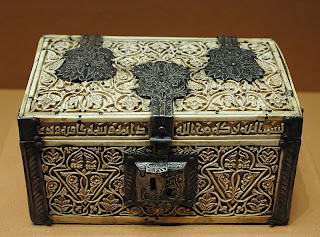Paris Louvre Müzesi (Musée du Louvre)
Fransız ihtilalinden sonra 1893 senesinde, Fransa'da açılan ilk devlet müzesi. Paris'te bulunan bu müze emsalleri arasında en ünlülerindendir.
Tarihçesi: Louvre, on üçüncü yüzyıl başlarında (1204), Philippe Auguste tarafından ilk şekliyle inşa ettirilmiştir. Adını İngilizce'de kuvvet, güç anlamına gelen “Lower” kelimesinden alan saray, daha sonra 14. yüzyılda kraliyet merkezi olmuştur. On beşinci yüzyılda ise saray, Loire'nin kıyısına taşınınca Louvre bakımsız kalmış ve 1564'te sarayın Tuileries bölümünün yapımına başlanmış fakat, Üçüncü Napolyon zamanında tamamlanabilmiştir. 1793'te müze haline gelen saray, 1871'de büyük bir yangın geçirmiştir. Yapılan tamirat ve değişikliklerle zamanımıza kadar gelen bina 1932'de son şeklini almıştır.
İçersinde bulunan sanat kolleksiyonları, yenileriyle birleştirilerek büyük bir sanat müzesi haline getirildi.
Louvre (Luvr) müzesi; yedi bölümden meydana gelmektedir. Her bölümün başında yetkili ve sorumlu kişiler vardır. Bunlar da müze müdürüne bağlıdır. Resim, heykel, doğu sanatları, Mısır sanatları, Yunan sanatları, sanat eserleri, desen gibi dallara ayrılan kısımlardan meydana gelmektedir. Doğu sanatları bölümünde; heykel, Akat uygarlıklarından eserler mevcuttur. Mısır sanatları kısmı ise, Mısır'dan getirilen ve Kahire Fransız Enstitüsü tarafından yapılan araştırmalarda ortaya çıkan, uygarlık örneklerinin tanınması bakımından önemlidir. Yunan sanatları bölümünde; M.Ö. 2000 yılı ile M.S. 3. yüzyıl sanatlarına ve çinilerine rastlanmaktadır.
Sanat eserleri bölümünde, ortaçağdan günümüze kadar gelen süsleme sanatı örnekleri; resim bölümünde, ortaçağ Fransız ve Avrupa resim kolleksiyonları vardır.
Heykel bölümü ise, 19. yüzyıl Fransız sanatının zamanımıza kadarki önemli eserlerini bulundurmaktadır.
Müzenin çok zengin kütüphanesi, konferans salonu ve eğitim bölümü, eserlerin incelendiği ve yenilendiği laboratuvar ile sanat tarihi ve müzecilik konusunda eğitim yapan Louvre Müze Okulu da önemli kısımlarındandır.
http://www.louvre.fr/
The Musée du Louvre (French pronunciation: [myze dy luvʁ]) – in English, the Louvre Museum or simply the Louvre – is one of the world's largest museums, the most visited art museum in the world and a historic monument. A central landmark of Paris, it is located on the Right Bank of the Seine in the 1st arrondissement (district). Nearly 35,000 objects from prehistory to the 19th century are exhibited over an area of 60,600 square metres (652,300 square feet).
The museum is housed in the Louvre Palace (Palais du Louvre) which began as a fortress built in the late 12th century under Philip II. Remnants of the fortress are visible in the basement of the museum. The building was extended many times to form the present Louvre Palace. In 1682, Louis XIV chose the Palace of Versailles for his household, leaving the Louvre primarily as a place to display the royal collection, including, from 1692, a collection of antique sculpture. In 1692, the building was occupied by the Académie des Inscriptions et Belles Lettres and the Académie Royale de Peinture et de Sculpture, which in 1699 held the first of a series of salons. The Académie remained at the Louvre for 100 years. During the French Revolution, the National Assembly decreed that the Louvre should be used as a museum, to display the nation's masterpieces.
The museum opened on 10 August 1793 with an exhibition of 537 paintings, the majority of the works being royal and confiscated church property. Because of structural problems with the building, the museum was closed in 1796 until 1801. The size of the collection increased under Napoleon and the museum was renamed the Musée Napoléon. After the defeat of Napoléon at Waterloo, many works seized by his armies were returned to their original owners. The collection was further increased during the reigns of Louis XVIII and Charles X, and during the Second French Empire the museum gained 20,000 pieces. Holdings have grown steadily through donations and gifts since the Third Republic. As of 2008, the collection is divided among eight curatorial departments: Egyptian Antiquities; Near Eastern Antiquities; Greek, Etruscan, and Roman Antiquities; Islamic Art; Sculpture; Decorative Arts; Paintings; Prints and Drawings.














Hiç yorum yok:
Yorum Gönder